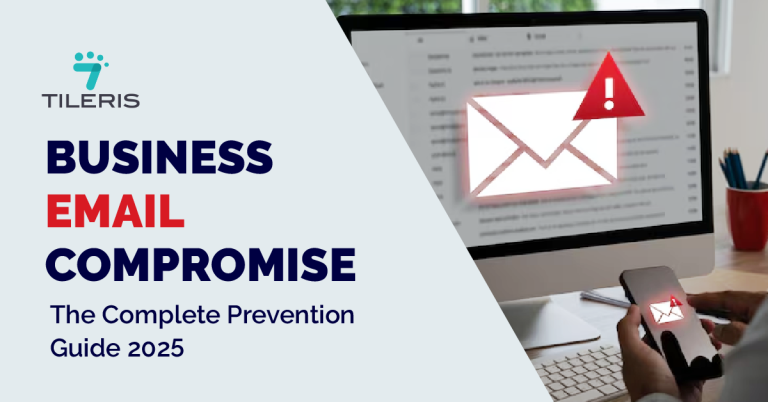Banking Security Best Practices
Introduction
These days, every tap, swipe, and click sends money and data flying in seconds, which makes banking security more important than ever. It’s no longer just about vaults and guards; it’s about digital defenses, smart algorithms, and a partnership between you and your bank to keep everything safe.
When we talk about banking security, we’re talking about the peace of mind that comes from knowing your hard-earned money and sensitive data are protected from the relentless tide of cyber threats. This isn’t some abstract concept, it touches our daily lives, influencing everything from paying bills online to receiving our salaries.
Think about it, how often do you interact with your bank without stepping foot inside a physical branch? Online banking, mobile apps, digital payments, these conveniences have transformed our financial lives. But with great convenience comes great responsibility, both for the banks safeguarding our assets and for us, the users of these digital services.
This article will delve into the multifaceted world of banking security best practices, offering insights for both the institutions working tirelessly behind the scenes and for you, the individual, empowering you to become an active participant in your own financial protection.
Why Banking Security Is Everyone’s Business Now
Just a decade ago, most people visited a physical bank branch to deposit checks, open accounts, or talk to a teller. Today, the majority of those transactions happen online, and so do most of the threats. From phishing emails that look shockingly real to sophisticated malware designed to skim your login credentials, banking security risks are both varied and ever-evolving.
According to a 2024 report by IBM Security, the financial services sector was the second most targeted industry for cyberattacks for the fourth consecutive year. That alone should make anyone pause. Criminals follow the money, and increasingly, that money lives in online accounts that are only as secure as the person using them.
How Banks Build Robust Banking Security
Financial institutions are at the forefront of the cybersecurity battle. They invest heavily in cutting-edge technology and employ legions of experts to protect against a constantly evolving array of threats. It’s a high-stakes game where even a single breach can have devastating consequences for trust and reputation.
One of the foundational pillars of modern banking security is data encryption. Imagine your financial data as a precious letter. Encryption is like scrambling that letter into an unreadable code, making it unintelligible to anyone without the right key.
This applies to data whether it’s sitting quietly on a bank’s server (data at rest) or zipping across the internet during a transaction (data in transit). Encryption isn’t just a technicality, it’s a fundamental safeguard that underpins all digital trust. It ensures that even if an attacker manages to intercept data, they’re left with meaningless gibberish.
Beyond encryption, banks fortify their digital perimeters with sophisticated secure networks and firewalls. These act like digital bouncers, scrutinizing every piece of information trying to enter or leave the bank’s systems. They block suspicious traffic and filter out unauthorized access attempts, much like a well-designed security gate.
Complementing this, Intrusion Detection Systems (IDS) are constantly at work, monitoring network activity for any anomalies or signs of a potential break-in. Think of them as silent alarms, always listening for the slightest tremor that indicates a threat.
The rise of cloud computing has brought both opportunities and challenges. Many banks now leverage cloud infrastructure for agility and scalability. However, this also means ensuring that these cloud environments are as secure as their on-premise counterparts.
This often involves adopting a Zero Trust architecture, a philosophy that essentially trusts no one and verifies everything. It means that every user, device, and application, regardless of whether it’s inside or outside the traditional network perimeter, must be authenticated and authorized before gaining access to resources.
Regular software updates and patching might sound mundane, but they are absolutely vital. Cybercriminals constantly discover new vulnerabilities in software, and vendors release patches to fix them. Banks operate on a strict schedule, ensuring all their systems, applications, and devices are updated promptly. Neglecting this is like leaving your front door unlocked, an open invitation for trouble.
Managing Access and Preventing Internal Threats
Even the most high-tech systems can fall apart if we don’t keep a close eye on who’s getting in. Which brings us to the critical world of strong authentication and access control, a cornerstone of banking security.
Multi-Factor Authentication (MFA),
Sometimes called two-factor authentication (2FA), is no longer an optional extra, it’s a baseline requirement for sensitive banking operations. It adds an extra layer of defense beyond just a password, demanding at least two different pieces of evidence to verify your identity. This could be a password combined with a one-time code sent to your phone, a fingerprint scan, or facial recognition. For financial institutions, MFA is enforced rigorously for all internal systems and sensitive data access.
Role-Based Access Control (RBAC).
This ensures that employees, contractors, and third parties only have access to the specific data and systems they absolutely need to perform their jobs. It’s the principle of “least privilege” in action. If someone doesn’t need access to customer credit card numbers for their role, they simply won’t have it.
This drastically limits the potential damage if an individual’s account is compromised. Closely related is Privileged Access Management (PAM), which focuses on strictly managing and monitoring accounts that have elevated privileges, such as system administrators. These accounts are the keys to the kingdom, and their security is paramount.
Unfortunately, not all threats come from external hackers. Insider threats – whether accidental or malicious, can also pose significant risks to banking security. This is where comprehensive employee training and awareness come into play. Banks conduct mandatory, ongoing cybersecurity training for all staff.
This isn’t just a tick-box exercise; it’s about creating a culture of security where every employee understands their role in protecting sensitive information. They learn to recognize phishing attempts, identify social engineering tactics, and understand the importance of reporting suspicious activities.
Proactive Measures and Compliance
The world of cyber threats is dynamic, constantly evolving. Therefore, banking security cannot be a static endeavor, it requires continuous vigilance and proactive adaptation.
Many banks are now leveraging AI-powered threat detection to stay one step ahead. AI and machine learning algorithms can analyze vast amounts of data in real-time, spotting abnormal patterns and identifying potential threats far more quickly and accurately than human analysts.
These intelligent systems are crucial for continuous monitoring of networks and systems, flagging unusual login times, access attempts from unusual locations, or other indicators of compromise.
Despite all the preventative measures, breaches can and sometimes do happen. That’s why a meticulously crafted and regularly tested incident response plan is indispensable for banking security.
This plan outlines clear steps for containment, recovery, and communication in the event of a security incident. It ensures that the bank can react swiftly and effectively, minimizing damage and restoring normal operations as quickly as possible.
This proactive approach is further reinforced by regular security audits and penetration testing. Independent experts attempt to breach the bank’s systems, uncovering vulnerabilities before malicious actors can exploit them.
Beyond internal measures, compliance and risk management are non-negotiable for banks. They must adhere to a complex web of local and international cybersecurity standards, laws, and regulations, such as PCI DSS, ISO/IEC 27001, SWIFT CSP, GLBA, SOX, and the new EU Digital Operational Resilience Act (DORA).
Failure to comply can result in hefty fines and severe reputational damage. Furthermore, banks are increasingly reliant on third-party vendors for various services, making third-party risk management a critical component of banking security.
They carefully assess the security practices of their vendors, incorporating strict contractual clauses and conducting regular audits.
Finally, fraud monitoring and prevention are in constant overdrive. Banks implement systems that provide real-time alerts for suspicious transactions, unusual activity, or high-volume transfers. Many also allow for customizable transaction limits, offering an additional layer of protection for customers.
Your Role in Banking Security
While banks bear the primary responsibility for banking security, you, the customer, are an equally important line of defense. Your habits and vigilance can significantly impact your financial safety.
Strong Password Practices and Authentication.
It sounds simple, but it’s often overlooked. Your passwords should be long (at least 12 characters), complex (a mix of uppercase, lowercase, numbers, and symbols), and unique for every single account, especially your banking accounts. Never reuse passwords!
Password Manager
Consider using a reputable password manager to generate and securely store these intricate combinations. And please, for the sake of your financial well-being, always enable Multi-Factor Authentication (MFA) whenever your bank offers it. That extra step of entering a code from your phone or using your fingerprint might feel like a tiny inconvenience, but it’s a massive barrier for fraudsters. Remember, your bank will never ask you for your password. Anyone who does is a scammer, plain and simple.
Vigilance Against Scams
A huge part of banking security for customers is vigilance against scams. Phishing, smishing (SMS phishing), and vishing (voice phishing) are rampant.
These scams are becoming increasingly sophisticated, often mimicking legitimate communications from your bank with chilling accuracy. Be extremely careful of unsolicited emails, texts, or calls that pressure you to click a link, download an attachment, or reveal personal information.
Always verify the sender and, if in doubt, contact your bank directly using a number you know to be authentic from their official website or a statement, not from the suspicious message itself.
When you’re banking online, always double-check that the website URL starts with “https://” and ideally, manually type your bank’s web address into your browser instead of clicking on links. And a golden rule: avoid conducting banking transactions on public Wi-Fi networks, they’re often unsecured and a playground for cyber eavesdroppers.
Monitor Your Account Activity Regularly.
Don’t wait for your monthly statement. Log in frequently, set up alerts for transactions, balance changes, or unusual activity. Many banks offer real-time notifications for every debit or credit. If you spot anything that looks even remotely suspicious, contact your bank immediately. Time is of the essence when it comes to fraud.
Device and Software Security
Your personal devices are gateways to your financial life. Keep your operating systems, banking apps, and antivirus software updated. These updates often contain critical security patches that protect against newly discovered vulnerabilities.
Always download banking apps only from official app stores. And please, secure your devices with strong passcodes. If your phone or computer falls into the wrong hands, you want that first layer of defense to be robust. When you’re done banking online, log out properly, don’t just close the browser tab.
Banking security is a shared journey. Banks are continually fortifying their defenses with advanced technologies, AI-driven solutions, and rigorous compliance. But their efforts are significantly amplified when customers are informed, vigilant, and proactive. By embracing these best practices, we collectively create a more secure financial ecosystem, safeguarding our digital wallets.
Conclusion
Banking security isn’t a checkbox; it’s a lifestyle. As the digital world expands, so do the threats, and so must our awareness. By weaving secure habits into your daily routine, you’re doing more than protecting your money. You’re taking ownership of your digital life.
Stay smart. Stay alert. And always take banking security seriously because when it comes to your finances, there’s no such thing as being too careful.
Take Your Banking Security to the Next Level?
Download your free Banking Security Checklist, packed with simple, practical steps you can start using today to keep your finances safe. Whether you’re managing personal accounts or business transactions, this guide is designed to help you stay secure in an increasingly digital world.
Need help navigating your next move?
Request a free consultation, our Tileris security experts are here to walk you through your options, recommend best practices tailored to your needs, and help you build a stronger defense against cyber threats.
Curious how smarter technology can protect your accounts around the clock?
Request a live demo of Tileris AI Agents in action.
Just reach out through our contact form, and we’ll show you what proactive, intelligent banking security really looks like.






